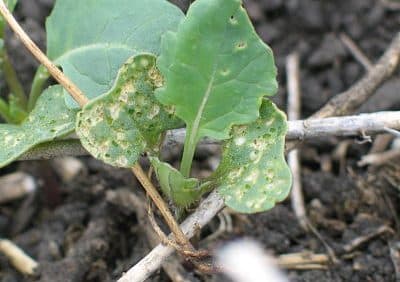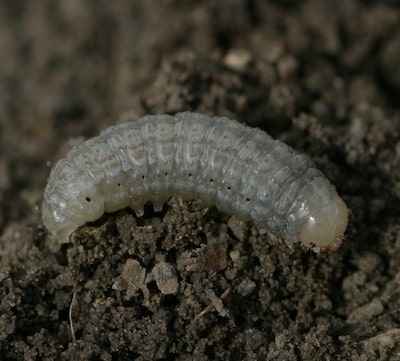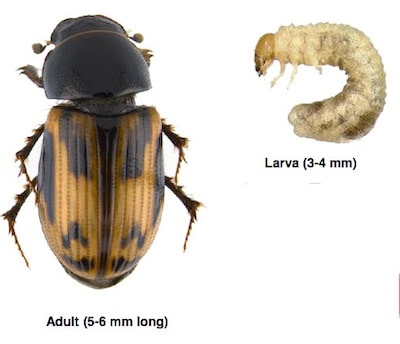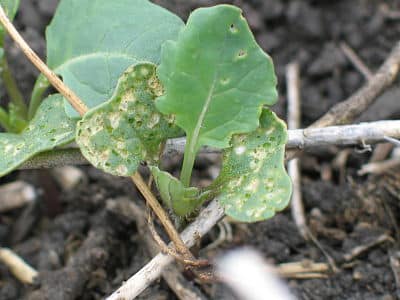
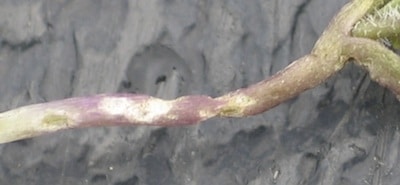
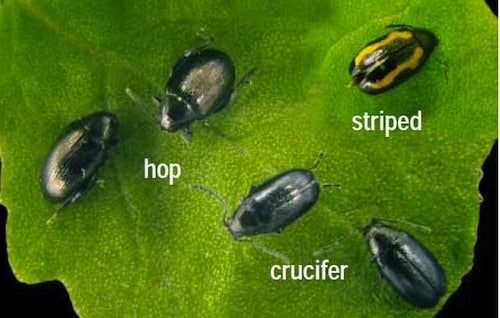
A few flea beetles do not warrant an insecticide application. Follow these guidelines when making a flea beetle spray decision:
Is leaf area loss more than 25%, on average? The economic threshold for flea beetles is when canola plants over a wide area of the field have 50% leaf defoliation. However, entomologists developed a 25% “action threshold” because under intense flea beetle feeding, a crop can go from 25% to 50% leaf area loss in a short time. When scouting, check 20 plants at 10 sites throughout the field.
Where are they feeding? If cool conditions force flea beetles to move down and feed on stems, a little feeding can be fatal to the seedling. If flea beetles are actively feeding on stems, action may be required — even if leaf defoliation is below 25%.
What is the plant stand? The economic threshold is based on a stand of 7 to 14 plants per square foot. In thinner stands, growers may want to reduce the action threshold somewhat.
Are the newest leaves damaged? If newest leaves are growing fast and virtually untouched, spraying is probably not necessary — even if cotyledons are heavily damaged. The flea beetle threat has likely subsided. If newest leaves are 25% defoliated and flea beetles continue to feed, then spraying may be warranted.
What is the crop stage? After the 4-leaf stage, canola plants are established and can outgrow flea beetle feeding without economic loss. If the crop is uneven, keep scouting until most of the crop has passed the 4-leaf stage. If some plants are damaged and others not, are the damaged plants likely untreated volunteers? Volunteers are not worth protecting if the planted seeds are untouched.
Cutworms survey continues
Spraying has begun for several cutworm species, including dingy, pale western, and red-backed cutworm, attacking canola, peas, and other spring crops. While scouting, would you also have time to report and sample cutworms? There is much we don’t know about the identification, biology, and management of cutworms. This is the second year of a 4-year cutworm research program to develop better decision-making tools and management practices for agronomists and growers in Western Canada. For more information on how to participate, read this letter — Cutworm Letter 2013 final draft — for background and to find your regional contact.
Scarab beetle larvae
Scarab beetle larvae are an occasional pest in canola, and often not a factor until June. Damage, if it occurs, is more likely on manured land or land with lots of fresh dead plant material (like a plow down or green manure). Ag Canada would appreciate samples, so if you’re curious about them, read more here.
